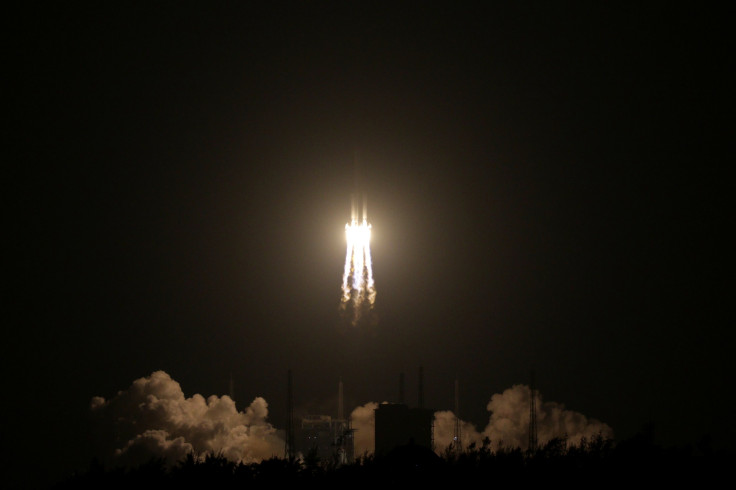China’s Ambitious Space Program: White Paper Reveals Plans To Send Probe To Far Side Of Moon In 2018

In a white paper outlining the plans for its ambitious space program, China announced Tuesday it would, sometime in 2018, seek to become the first country to soft land a probe on the far side of the moon. The spacecraft, Chang’e-4, would help better understand the formation and evolution of the moon, the country’s State Council Information Office said in the paper.
“Through the lunar exploration project, topographic and geological surveys will be implemented and laboratory research conducted on lunar samples; geological survey and research as well as low-frequency radio astronomy observation and research will be carried out targeting the landing area on the far side of the moon,” the white paper read.
In addition, the white paper also reiterated China’s commitment to send a probe to Mars by 2020.
“[China] will conduct further studies and key technological research on the bringing back of samples from Mars, asteroid exploration, exploration of the Jupiter system and planet fly-by exploration,” the information office said.
Since it sent its first satellite into orbit in 1970, China has been pumping large amounts of cash into its military-backed space program. It sent its first astronaut to space in 2003, and in 2011, it launched Tiangong-1 — the first operational component of the Tiangong program, which seeks to put a permanently manned space station into service by 2022.
The second component, Tiangong-2, was launched in September.
Even before the publication of the white paper on Tuesday, the Chinese government had made amply clear — especially through the 2013 launch of its first lunar rover Jade Rabbit — that its space exploration ambitions extended far beyond establishing a presence in low-Earth orbit.
In addition to the planned lunar and Martian missions, the white paper also listed exploration of asteroids and the Jupiter system as key goals — the first time these aims have been officially mentioned.
“In the next five years China plans to expedite the development of its space endeavors by continuing to enhance the basic capacities of its space industry, strengthen research into key and cutting-edge technologies, and implement manned spaceflight, lunar exploration... and other important projects,” the white paper read. “Furthermore, the country is to launch new key scientific and technological programs and major projects, complete, by and large, its space infrastructure system, expand its space applications in breadth and depth.”
© Copyright IBTimes 2025. All rights reserved.






















